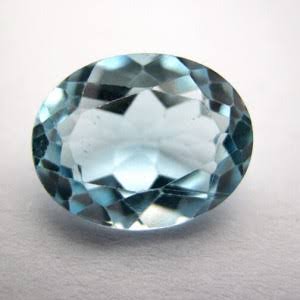Aquamarine
Starting at Rs. ₹120.00 Per Rati
Found in Granite rocks Aquamarine is one of the most popular gems following its high physical transparency. Easy to cut and shape the abundance of its availability makes its usage widely versatile.
Available in colours of blue, dark blue, greenish blue, greenish blue, cyan the benefits of Aquamarine are as follows:
-Helps boost healing particularly when worn close to the injured part of the body
-Aids in the reduction of arthritis, eye inflammation, sore throat, and varicose veins
Description
Aquamarine is a color that is a bluish tint of cerulean toned toward cyan. It is named after the mineral aquamarine, a gemstone mainly found in granite rocks. The first recorded use of aquamarine as a color name in English was in 1598.
Aquamarine’s color range is very narrow: It can be blue, very slightly greenish blue, greenish blue, very strongly greenish blue, or green-blue. The gem’s most valuable color is a dark blue to slightly greenish blue with moderately strong intensity. In general, the purer and more intense the blue color, the more valuable the stone. Most aquamarine is a light greenish blue.
Although some buyers prefer the more greenish natural color, most of the aquamarine in the market was heat-treated to give it more of a pure blue.
Fashioned aquamarines often have to be fairly large—generally over 5 carats—to show intense, dark color. Although small gems are rarely saturated enough to be attractive, stones from some mines in Africa—Nigeria, Madagascar, and Mozambique, for example—are known for intense color in sizes under 5 carats. For this reason, smaller, top-color stones might sell for more per carat than larger stones of the same color.
Most faceted aquamarines are eye-clean. Some crystals might contain liquid inclusions, but clarity characteristics are few or absent in most finished gems. Stones with eye-visible inclusions are usually fashioned into cabochons, beads, or carvings.
In some beryl crystals, there are enough parallel inclusions—usually long hollow or liquid-filled tubes—to allow cutters to fashion the rough to show a cat’s-eye.
Aquamarines can be cut into almost any shape, but cutters often fashion them as emerald cuts or as round or oval brilliants. The rough is fairly plentiful, so well-cut stones are fairly common. The gemstone’s hardness and transparency make it popular with designers, artists, and carvers. Gem sculptors use aquamarine for fantasy cuts and ornamental objects.
The gem is pleochroic, which means it shows different colors in different crystal directions—in the case of aquamarine, they’re near-colorless and strong blue. Fortunately, the blue pleochroic color corresponds with the cutting orientation that retains the most weight, with the table facet aligned parallel to the length of the crystal.
Aquamarine, and other types of beryl are quite durable and hard, ranging from 7.5 to 8 on the Mohs scale of mineral hardness. A dark and deeply saturated blue is the most desirable and valuable aquamarine color. Other varieties of beryl include morganite, goshenite, golden beryl (heliodor), green beryl and bixbite. Aquamarine can typically be identified by its unique sea-blue colors. It is rather hard and has a vitreous luster. Aquamarine stones have excellent clarity and transparency compared to many other similar gems. The intensity of color and the clarity of the stone are the most important criteria when evaluating aquamarine, followed closely by quality of cut. Aquamarine is colored by trace amounts of iron and testing of composition, trace elements and its six-sided crystal structure can easily distinguish it from other blue-green stones.
Aquamarine is typically untreated, but some material may be heated to improve color. Heating at low temperatures will reduce unwanted green and yellowish tones. Darker shades of aquamarine are often heated, as well as lower quality stones (usually at 725-850 F or 400-450 C) in order to obtain a more favorable blue. Heating at higher temperatures results in discoloration.
According to legend, aquamarine originated in the treasure chest of fabulous mermaids, and has since ancient times, been regarded as ‘the sailor’s lucky stone’. Aquamarine derives its name from the Latin term for seawater and has a long tradition of being a stone for those who spend much of their time at sea. The Greeks and the Romans knew aquamarine as the sailor’s gem too, believing that it ensured a safe and prosperous passage across stormy seas. Legend has it that aquamarines were the prized possessions of many mermaids and would thus protect sailors from the dangers of sea, including warding off sea-sickness.
In Antiquity, as well as in the Middle Ages people believed that the cosmos is reflected in gemstones. It is no surprise that aquamarine is assigned to the planet Neptune and is also one of March’s official birthstones. The esoteric movement revived the ancient belief and the gem industry made it another marketing tool to promote certain gems.
The healing powers of gems remains a controversial issue, but has been mentioned for centuries by healers, shamans and medicine men. Whether it’s factual or a placebo effect, it truly doesn’t matter as long as it helps people who need it. The best approach is to wear the gemstone in contact with the skin, especially close to the injured or troubled part of the body. Aquamarine is said to be of help for arthritis, eye inflammation, sore throat and varicose veins.


Reviews
There are no reviews yet.